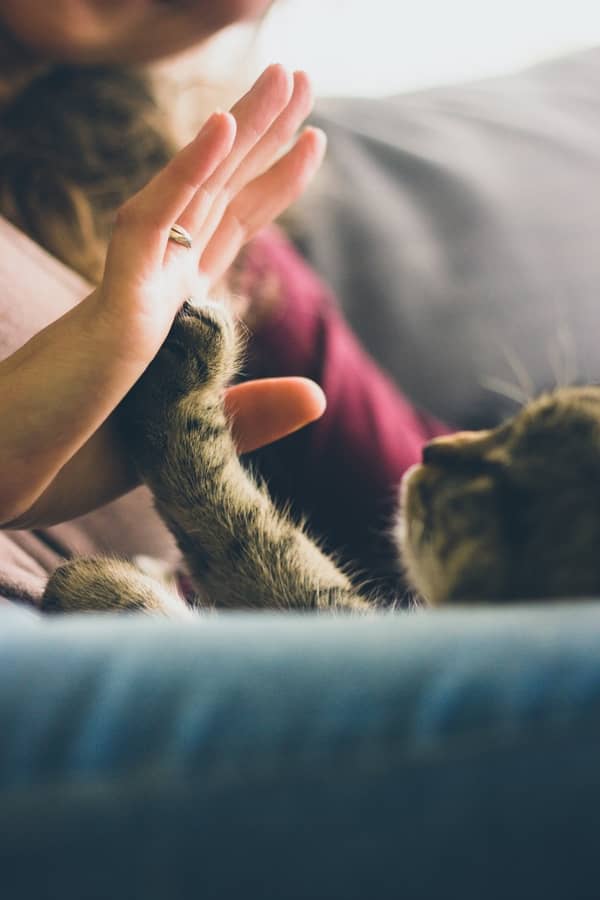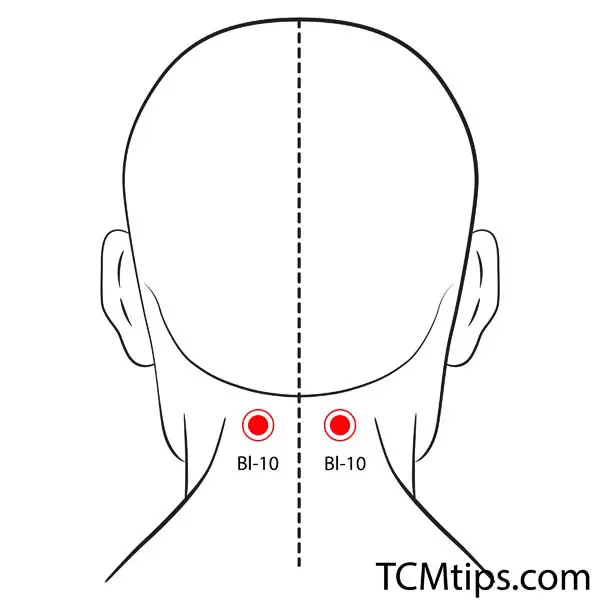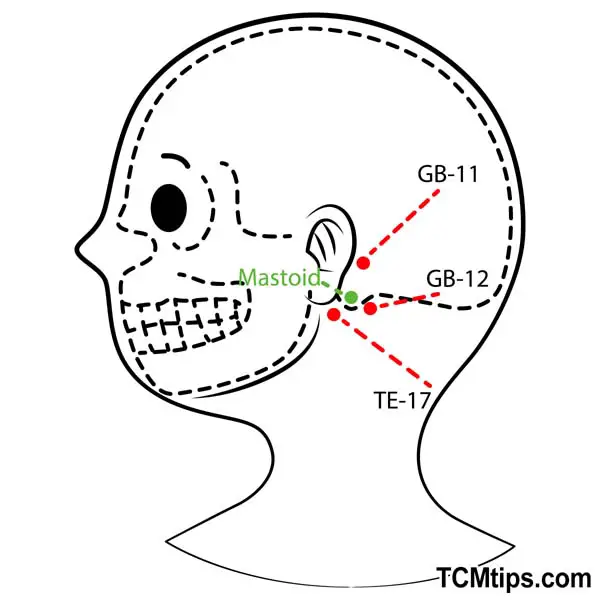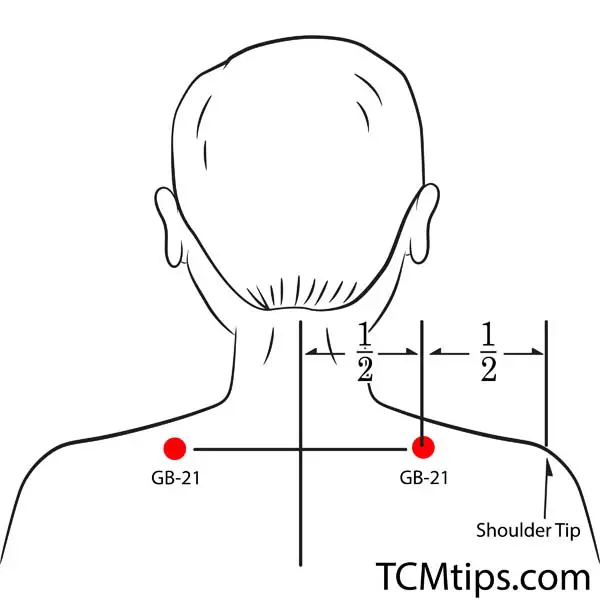One of the things I’m most grateful for in this life is acupressure points. Not only do they save you the cost and time of visiting the doctor, but they also are simple to use and convenient. Knowing most of the acupoints, what they are used for, and when to use them has kept me healthy for years. Bl-10, or the Heavenly Pillar acupressure point, is one of the acupoints I’m most grateful for.
Bl-10 is a bladder meridian acupressure point that is located at the nape of the neck. When massaged, it reduces stiffness in the neck, stops back pain, and prevents mental stress. The healing benefits of the heavenly pillar are almost endless when combined with other acupressure points.
So, in this article, I’ll show you four health conditions for which you can use Bl-10, whether alone or combined with other pressure points.
How Do You Massage Heaven’s Pillar?

The effectiveness of pressure points depends greatly on how they are massaged. For most acupressure points, you’ll need to apply firm pressure, enough for it to hurt a little. However, applying firm pressure depends on how developed the muscles are. If the muscles on the pressure point in focus are well developed, apply more pressure, but if it is less developed, apply gentle pressure.
You keep applying pressure until it begins to hurt. At that point, you gradually begin to reduce the pleasure. You do so until you maintain a balance between pain and pleasure. The muscle around Bl-10 isn’t well developed, so you’ll have to massage it gently with your fingers. Massage for intervals of 30 seconds and stop after 2 minutes.
For better results, massage the pressure point at both sides of the head together and extend slightly to the spine.
Now, let’s discuss the usefulness of Bl-10 alone and combined with other pressure points.
For Autonomic Nervous System Disorders
Autonomic nervous system disorders are disorders that occur as a result of damages to the autonomic nerves, which are nerves that are responsible for involuntary actions of the body such as heartbeat and the widening or narrowing of the blood vessels.
Acupoint: Bl-10 (Other Names: Urinary Bladder-10/Tian Zhu/Celestial Pillar)

The heaven’s pillar acupressure point is the major pressure point for nervous system disorders. It is called Tanzhu in Chinese, and it is located at the nape of the neck. You’ll find it at the border of the trapezius muscle (the muscle that moves from the head to the back of the neck and shoulders), midway between the base of the skull and that of the neck.
In Traditional Chinese medicine, Bl-10, one of the pressure points in the neck, aids in the expelling of wind, soothing of the sinews, and the opening of the orifices of the senses. It is for this reason that this pressure point is able to relieve stress, loosen up stiffness in the neck, and improve the flow of blood to refresh the head and eyes.
For Vertigo
Vertigo is the sensation of being off-balance, or that you or the world is spinning around, that we sometimes have. Some of the causes of vertigo include semicircular canals problems, insufficient blood flow to the brain, and disturbances of the autonomic nerves.
Acupoint: Bl-10 (Other Names: Urinary Bladder-10/Tian Zhu/Celestial Pillar) and Acupoint: GB-12 (Other Names: Gallbladder-12/Wan Gu/Mastoid Process)

The heavenly pillar acupressure point and GB-12 are the two pressure points to combine when you have vertigo. While Bl-10 will regulate your blood flow, GB-12 will restore your sense of balance.
GB-12 or Wangu, as it is called in Chinese, is a gall bladder meridian acupressure point. It is located higher above Bl-10, behind the ears. To locate GB-12, trace a finger over the bone at the back of the ears, which is called the mastoid bone, to the depression below it. The depression behind the mastoid process is GB-12.
When massaged alone, GB-12 will treat toothache, neck pain, and swellings on the cheek. A recent study that performed acupuncture at the “seven acupoints on the neck,” which Bl-10 and GB-12 amongst others, found this therapy to be effective in improving vertigo and the supply of brain blood. GB-12 is also one of the acupressure points for blood circulation in the brain.
To massage GB-12, use your middle fingers to trace the pressure point, then push it slowly for 5 seconds, with your eyes closed and without breathing. Release slowly after 5 seconds and repeat the motion for about 10 minutes.
For Falling Asleep
Poor blood circulation around the shoulders will make it difficult for you to sleep. In this case, you need to combine the acupoints below to fall asleep easily.
Acupoint: Bl-10 (Other Names: Urinary Bladder-10/Tian Zhu/Celestial Pillar) and Acupoint: GB-21 (Other Names: Gallbladder-21/Jian Jing/Shoulder Well)
GB-21 is another gall bladder pillar that can be perfectly combined with Bl-10 for wonderful health benefits. This pressure point is called Jianjing in Chinese, which translates to Shoulder Well. It is located at the highest point of the shoulder (which in most people is directly above the nipples), at the midpoint between the base of the neck and the end of the shoulder.
Because of its location, Chinese medicine believes that it holds a lot of benefits to the breasts. However, when massaged alone, it cures headache, neck pain, and insufficient lactation. Research conducted this year found that massaging GB-12 brings relief to pain during labor. GB-21 is also part of the acupressure points for cervical spondylitis.
Massaging GB-21 requires firm pressure, and it’s best if you get someone to do it for you. To massage this pressure point, use your middle fingers to reach the tight part of the trapezius muscle on the opposite shoulder, then use your thumb to apply deep pressure on this point either while sitting or lying down.

For Headaches
The heaven’s pillar acupressure point is combined with two other pressure points to bring instant relief to headaches. They are:
Acupoint: Bl-10 (Other Names: Urinary Bladder-10/Tian Zhu/Celestial Pillar), Acupoint: EM-5 (Other Names: Tai Yang) and Acupoint: LI-4 (Other Names: Large Intestine-4/He Gu/Joining Valley)

EM-5 and LI-4 are the two other pressure points to combine with Bl-10 to bring an end to headaches. Stimulating Bl-10 will help bring relief for headaches or tired eyes. EM-5 will improve the blood flow to your eyes as a result of muscle tension that arises from using your eyes so much every day. LI-4, on the other hand, is effective for a number of pains.
EM-5 is known as Taiyang in Chinese, and this means Greater Yang. It is located around the temples, at the depression a finger-width from the end of the eyebrow and the outer corner of the eye. It is one of the acupressure points to stay awake and is best massaged with the pad of your finger.

LI-4 is a large interesting meridian acupoint. It is called Hegu in Chinese and is located at the fleshy depression at the point where the bones of the thumb and index finger meet when you make a “v” with the fingers. LI-4 is a versatile acupoint, serving as one of the acupressure points for blocked fallopian tubes.
A 2016 research found that combining Bl-10, LI-4, and five other acupoints to perform the warming-needle moxibustion therapy is more effective than normal acupuncture in treating cervical headaches.

Try our Anti-Aging Gua Sha Tool designed to bring out your skin’s natural glow.
Best Gua Sha Product- Anti-Aging: The tool is designed to target 11 specific aging signs such as wrinkles and sagging skin. By following the 7-step routine, users can improve skin firmness and reduce fine lines naturally.
- Enhances Skincare Routine: It works effectively with serums and lotions, boosting absorption and efficacy of skincare products.
- Visible Skin Improvement: Users can expect a smoother complexion, reduced puffiness, and a more youthful appearance.
 P. Sze
P. Sze 

















